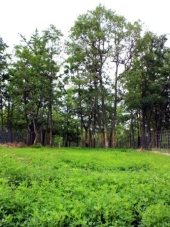
 8
8




...Trying to start an urban eco-logical cohousing community here in the East Bay, California.
 8
8




 6
6




Our greatest human adventure is the evolution of consciousness. We are in this life to enlarge the soul, liberate the spirit, and light up the brain. T.R.
 5
5




"Never doubt that a group of thoughtful, committed citizens can change the world. Indeed, it's the only thing that ever has." - Margaret Mead
 5
5




Julie Pastore wrote:What meadow plants will grow from seed and penetrate compacted soils? Burdock? Yes/no? What else? I ask because I may be rehabilitating a parking lot this year! I want plant pioneers to do the work of loosening things up.
Thanks!
 4
4




Strong communities make police obsolete.



 9
9




Together is our favorite place to be
 5
5




 5
5




 6
6




Please give me your thoughts on my Affordable, double-paned earthbag window concept

















 3
3




 6
6




Blazing trails in disabled homesteading
 3
3




Invasive plants are Earth's way of insisting we notice her medicines. Stephen Herrod Buhner
Everyone learns what works by learning what doesn't work. Stephen Herrod Buhner
 2
2




 1
1




Dave Bross wrote:I'm using Daikon radish a lot as a cover crop, and there are things it will and won't do here.
it does break up a good bit of the soil on top, maybe 3 - 4" , but once it hits that point it starts pushing up out of the ground instead of burrowing down.
That's not in what you think of as everyday sand, but a weird sand that packs together surprisingly well, making for a bit of a root penetration problem. Nothing like plow pan, although you probably could cause that, or tight clay, but a bit of an issue still. It's actually in demand locally for using as a base for cement slabs because of this packing together characteristic.
Dave Bross wrote:If anyone locally sells earthworms, or you know where to find some (ask fresh water fisherman) you could add some to jump start things.
Dave Bross wrote:Some others you could plant, which actually add to the fertility, one big, one small....
Goumi berry, autumn olive (possibly illegal or invasive wherever you are), silverberry (elaeagnus ebbingi) or any others in the elaeagnus family that have edible berries. These pull nitrogen from the air and make it available in the soil. The ebbingi don't drop their leaves so they're a possibility for a hedge. All these are large shrubs, some going to 12 - 15' high. The autumn olive are the most bulletproof and fastest growing. They've been seen thriving in places nothing else will grow and they propagate really easily from hardwood cuttings taken early spring. I would suggest named cultivars so you get tasty berries too.
Comfrey - this may be able to drill your soil. It goes deep seeking the other nutrients besides nitrogen and brings them topside as leaves fall off and return the goodies to the soil. Even without the leaf drop other plants seem to do better in their company. Low growing plant big leaves. In my local conditions it will dig through our compacted sand.
Blazing trails in disabled homesteading




Julie Pastore wrote:What meadow plants will grow from seed and penetrate compacted soils? Burdock? Yes/no?
I had read SO much about daikon and was looking forward to it breaking up my clay soil but alas, as someone stated, it only grew a couple of inches down. 1 to 3 inches so no, it did NOT work on my hardpan either.
As to clay busting plants yes burdock. Its growing prolifically through my weeping bed which isn't good considering the length of the roots! I was chopping and dropping it there all season but its going into the garden this year! I've come to learn since how good the leaves are for your soil too. I'll have to lay that patch fallow for the season constantly chopping and dropping but that's ok. In the fall I'm planting winter rye.
Going through all this for one season should facilitate a tremendous improvement....one can only hope.
I will allow some burdock to go to seed so I can plant it in a different patch the next Spring, and on it goes.
I have comfrey on the grow too both varieties. One goes to seed the other doesn't. I wanted the 'invasive' seeding variety so I can save those seeds and move it around the property as well. I'm sure you know how great comfrey is for permaculture as a nitrogen soil feeding maniac. :)
I know this is an old thread but perhaps we can help someone.

|
expectation is the root of all heartache - shakespeare. tiny ad:
Homestead Pigs Course
https://permies.com/wiki/365748/Homestead-Pigs
|




